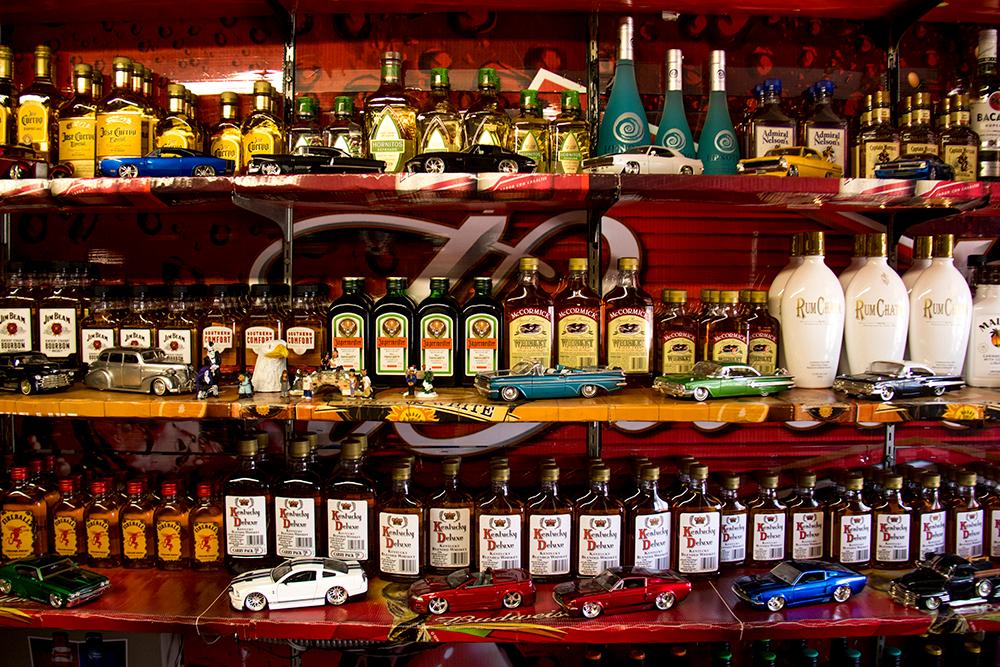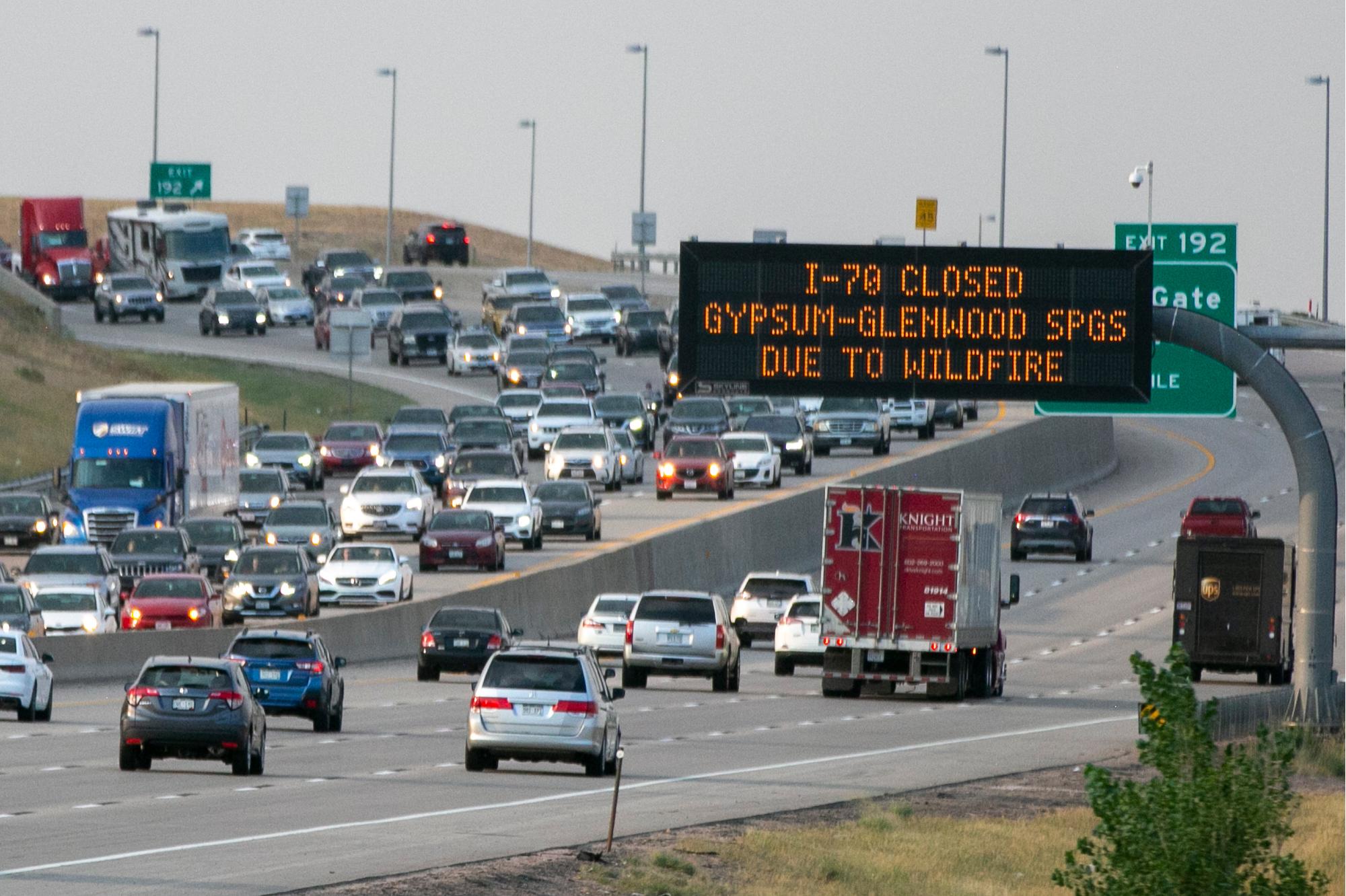
Editor's Note: This post rounds up all our reporting on the state's four major wildfires for Monday, Aug. 17, 2020. You can find Tuesday's updates here. Our original story continues below.
Weather conditions continue to antagonize the four fires currently burning in Colorado. Elevated fire danger will continue for the week and smoky skies have quickly become the August normal.
And for the curious, I-70 through Glenwood Canyon remains closed — snarling a major east-west thoroughfare and sending travelers on a long detour.
Here are the current statuses of Colorado’s four wildfires (click on the fire name to jump to the updates):
- Grizzly Creek Fire: 25,007 acres, no containment (Aug. 17, 7:18 p.m.)
- Pine Gulch Fire: 86,120 acres, 7 percent containment (Aug. 17, 7:09 p.m.)
- Cameron Peak Fire: 13,305 acres, no containment (Aug. 17, 12:28 p.m.)
- Williams Fork Fire: 6,345 acres, no containment (Aug. 17, 3:28 p.m.)
Grizzly Creek Fire
5:06 p.m.: Smoke is still blanketing towns along I-70 in the mountains, but that hasn’t stopped some people from going outside.
John Omstead was in Gypsum today fishing on the Eagle River, where he felt the effects of the fire and the hot weather.
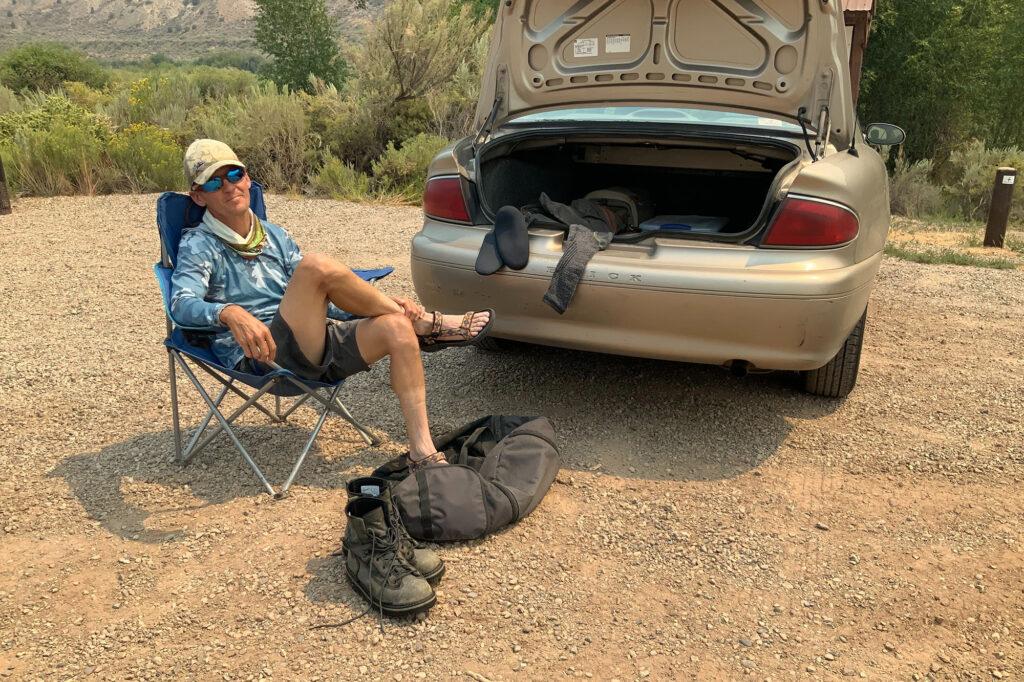
"Can definitely feel the smoke on my eyes — they're burning. I've only been out for a couple of hours, and that was half the reason I quit fishing, was my eyes are starting to burn," Omstead said. "And the water is warming up because it's been so warm."
He's worried about how the canyon will fare in the fire and is really hoping for some rain, even though he knows it’s not in the forecast.
— Michael Elizabeth Sakas
4:49 p.m.: While the area around the fire is still seeing hot and dry conditions, the wind has died down a bit in the last 24 hours.
That means fire has moved to higher terrain and become less active, information officer Brian Scott said.
"It’s just running out of the large conifer fuels and getting up on top where there's more smaller brush and grasses," Scott said. "And so those fuels will carry the fire slower and allow us our firefighters to make better progress."
While containment still stands at zero, more crew members and resources are arriving today and to help establish stronger fire lines.
— Alison Borden
4:41 p.m.: Smoke covered the sky in Dotsero, a small community a few miles east of Glenwood Springs that is facing pre-evacuation notices.
3:15 p.m.: The White River National Forest has expanded some closures around the fire. According to forest officials, the restricted area extends from the east boundary at the Colorado River Road in Dotsero to the south at the White River National Forest boundary in Glenwood Canyon, to the north at the southern boundary of the Flat Tops Wilderness, and to the west near Adams Lake.
3:02 p.m.: Curious how things are looking at the interstate exit to the Hanging Lake Trailhead?
11:28 a.m.: Yes, you can drive your car or truck over Independence Pass between Aspen and Leadville — even if Google Maps doesn't send you that way.
Traffic is moving "smoothly," over the pass since it reopened last Friday, said CDOT spokeswoman Elise Thatcher. And one reason is mapping companies including Google and Apple aren't recommending the route. That's at CDOT's request, Thatcher said, partly to keep traffic numbers low, and partly to keep commercial trucks (which are banned from the pass in normal times) off of it now.
There's still no word on when I-70 will reopen. So while tourists and locals who need to get in and out of the Roaring Fork Valley now have a much-needed outlet, companies needing to ship the essentials like gasoline and beer still have to make long detours.
— Nathaniel Minor
9:13 a.m.: Several fire agencies in the state are lending support to the wildland fire crews.
Here are more photos of your #DenverFire Wildland team performing Back Burn Operations in Bair Ranch at the #GrizzlyCreekFire last night. Stay safe out there! @CityofDenver @DenSafetyDept pic.twitter.com/e3SmBo5WSf
— Denver Fire Dept. (@Denver_Fire) August 17, 2020
7:52 a.m.: The Grizzly Creek fire continues to grow, but forest officials say there are reasons to be hopeful. Scott Fitzwilliams, a supervisor with the White River National Forest, says some of Glenwood Canyon has only been lightly affected by the flames.
"It's going to change, but it's not — I don't want you to think in your head it's all a blackened canyon walls," he said. "And that's good because we all love that canyon so much."
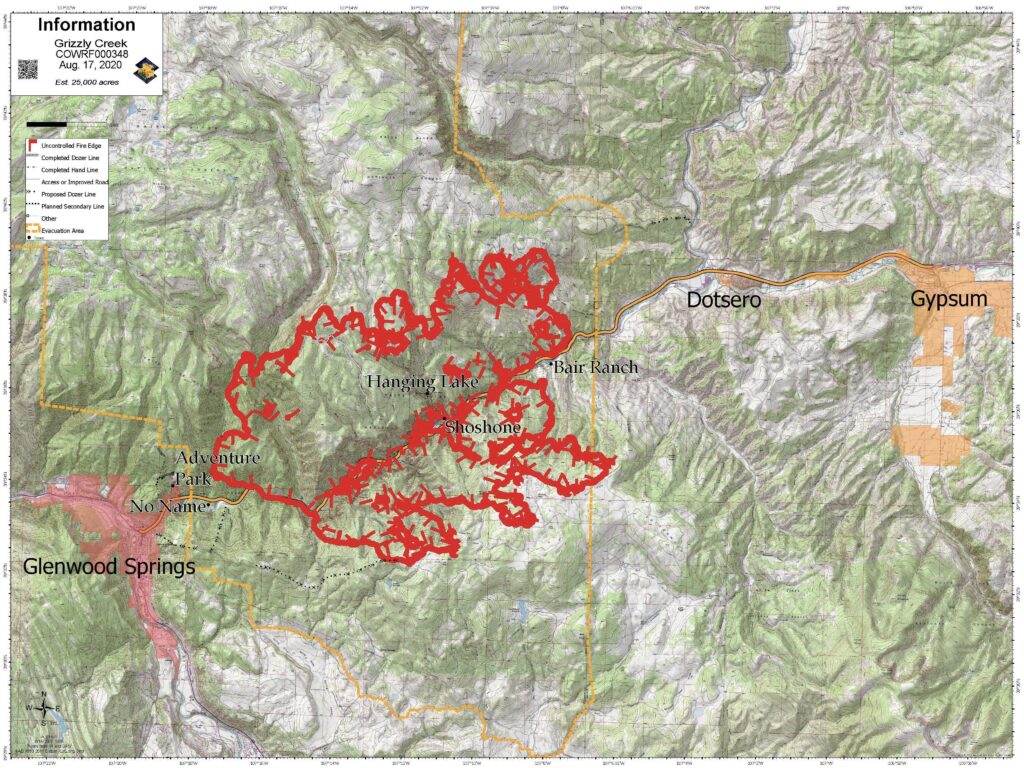
Pine Gulch Fire
6:31 p.m.: What does it mean when a fire is partially contained but still growing? That's the case of the Pine Gulch fire, which has been kept at 7 percent containment over the past several days even as it ballooned to over 85,000 acres.
Fire information officer John Peterson says it comes down to building the control line that flames won’t spread past.
"We'll add more line on a daily basis saying this is contained, but the fire is growing. So proportionally, it's still staying at about 7 percent," Peterson said.
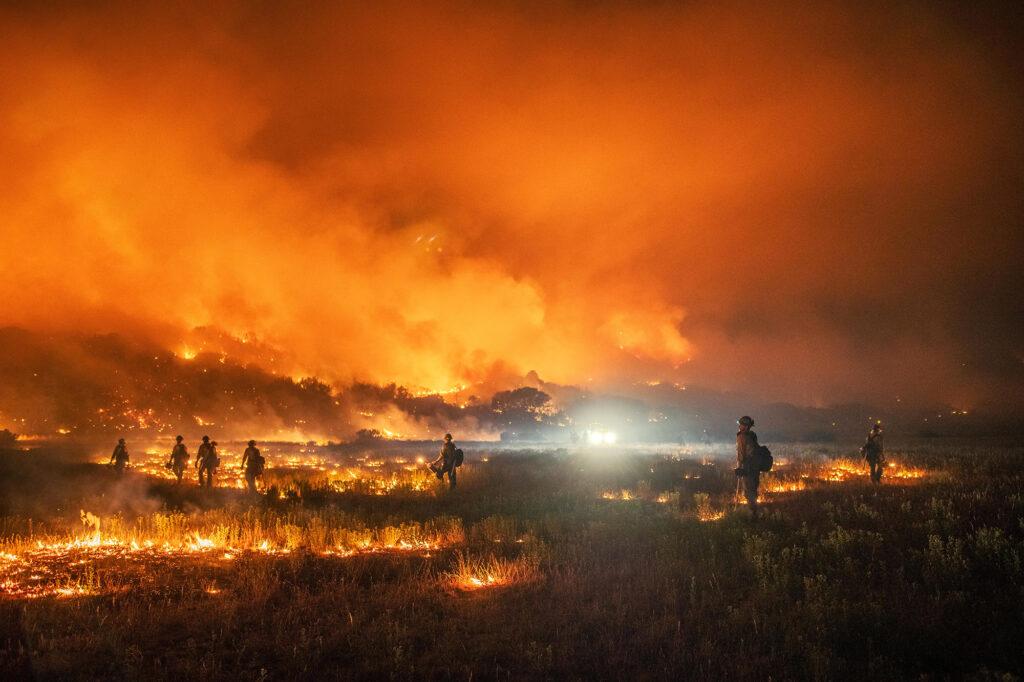
— Paolo Zialcita
4:35 p.m.: Firefighters got an opportunity to increase containment on the blaze as winds finally relented.
"We feel if we could make it through today, and particularly the next 48 hours and hold this fire in place, that we will have significantly contained where this fire is going," fire information officer John Peterson said. "And over the next week or so, we'll be able to control this fire.”
— Paolo Zialcita
10:58 a.m.: Officials say that Monday is a critical day to "influence the duration" of the fire and will be working quickly to seize on suppression opportunities. There are 811 personnel, 55 fire engines, nine helicopters and eight bulldozers on the fire.
Additionally, there is concern that the fire and winds have aligned with drainages in the area that are full of dry fuels, which could lead to greater fire growth.
7:52 a.m.: Hot and dry weather will continue for the area. The Pine Gulch Fire — already the fourth-largest blaze in state history — continues to close in on the 2012 High Park Fire in terms of acreage burned. Unlike the other fires burning in the state, there is some containment around the Pine Gulch. The firelines are predominately on the eastern and southern edges of the fire.
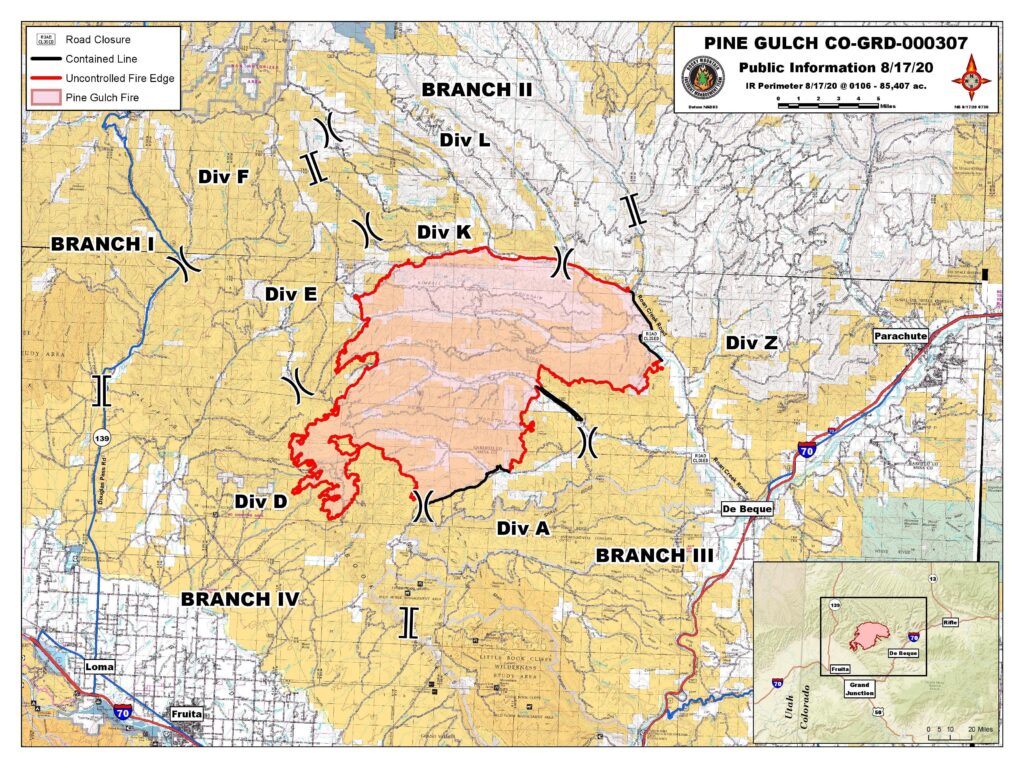
Cameron Peak Fire
1:06 p.m.: Some photos from last night's operations.
Daytime vs. nighttime operations. These images from Brush 33’s crew deployed on the #CameronPeakFire working the overnight shift. pic.twitter.com/QsYUH6rbX2
— South Metro Fire Rescue (@SouthMetroPIO) August 17, 2020
10:47 a.m.: The Cameron Peak Fire is now 13,305 acres. No structures have been damaged and crews report solid progress on defensible space around structures and facilities. Work continues to remove fuels and prepare the area for burnout operations between lines and the front of the fire itself.
7:52 a.m.: The fire is active and fire officials say the blaze advanced on all fronts Sunday. In order to slow any northward progress, an air tanker laid down retardant and crew are working to protect structures on private land in the Laramie River Valley.
"Right now, our crews are looking at this fire in a big-box situation," said public information officer Kristie Saldmann. "That means fire activity and behavior is too extreme to put firefighters near the edge of that fire."
The cause of the fire is unknown and remains under investigation.
Williams Fork Fire
6:26 p.m.: The fire has reached over 6,300 acres. Fire official Brad Johnson says the southeast section of the fire is threatening several key pieces of infrastructure.
"All the infrastructure that's in place down here, the Henderson Mine, the power utility poles, the infrastructure with the natural gas company. Been working very closely with them as well," Johnson said.
— Paolo Zialcita
7:52 a.m.: The human-caused fire remains active and moving to the east. Fire officials note that the fire is burning in a remote area with extensive past beetle kill.
"This is going to be a long month, a long possible two months," said incident commander Ed LeBlanc." We're coming into our dryer part of the season. And, um, we're looking at expected containment date sometime in October."
A new Type 2 management team will assume control of the fire on Monday, bringing additional resources to the fight. The Town of Fraser is 7 miles northeast from the active front of the Williams Fork Fire.






